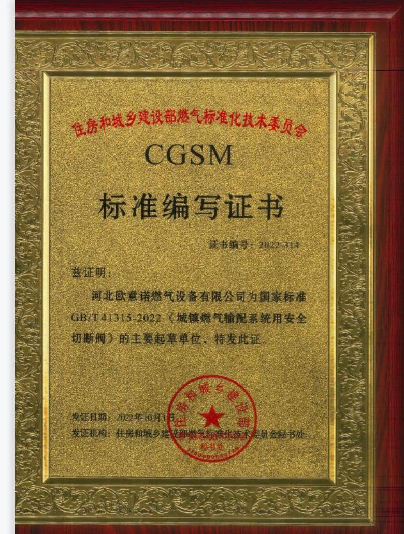
Dec . 05, 2024 08:21
Back to list
Understanding High Pressure Regulators for Safe and Efficient Gas Control Systems
Understanding High Pressure Regulators Function and Importance
High pressure regulators are essential devices used to control the pressure of gases or fluids from high-pressure sources to safer, more manageable levels for various applications. These regulators play a critical role in industrial processes, medical applications, and even recreational activities, making their understanding crucial for engineers, technicians, and safety personnel.
What Is a High Pressure Regulator?
A high pressure regulator is a type of valve that reduces the pressure of a fluid or gas supplied from a high-pressure source to a desired lower pressure level. Often, these regulators are found at the forefront of many applications, such as gas cylinders in welding, oxygen delivery systems in hospitals, and even in the energy sector where natural gas is distributed.
The primary function of a high pressure regulator is to ensure that the delivery pressure remains constant despite fluctuations in upstream pressure or downstream demand. This characteristic is key for many processes that require precise control over pressure to ensure safety and efficiency.
Components of High Pressure Regulators
High pressure regulators typically consist of several key components
1. Inlet and Outlet Ports These are the connections for the high-pressure supply and the regulated output, respectively.
2. Diaphragm A flexible membrane that responds to pressure changes, allowing the regulator to adjust the flow accordingly.
3. Adjustment Mechanism This can be a knob or screw that allows users to set the desired outlet pressure.
4. Relief Valve A safety feature that releases excess pressure if it exceeds a predetermined limit, preventing potential accidents or equipment damage.
5. Spring This component applies force on the diaphragm, helping to maintain the set outlet pressure.
high pressure regulators

Applications of High Pressure Regulators
High pressure regulators are used across a wide range of industries, each with unique requirements
1. Welding and Cutting In the welding industry, regulators control the pressure of gases such as acetylene and oxygen to provide the right flame characteristics for welding metals.
2. Medical Supply Systems Hospitals utilize high pressure regulators to ensure a safe supply of gases such as oxygen and nitrous oxide for patient care. Precise pressure regulation is paramount in medical settings to avoid any adverse effects.
3. Oil and Gas Industry In the energy sector, regulators help manage the pressure of natural gas in pipelines, ensuring safe transportation and distribution to consumers.
4. Laboratories High pressure regulators are vital in laboratory settings for experiments requiring specific gas pressures for reactions.
Importance of High Pressure Regulators
The significance of high pressure regulators cannot be overstated. They enhance safety by preventing overpressurization, which can lead to catastrophic failures or explosions. Additionally, they contribute to efficiency by maintaining optimal operating conditions, thereby prolonging equipment life and reducing downtime.
Moreover, regulatory standards often mandate the use of pressure regulators in various applications to ensure compliance with safety regulations. For instance, organizations such as the Occupational Safety and Health Administration (OSHA) and the National Fire Protection Association (NFPA) provide guidelines that include proper use and maintenance of high pressure regulators.
Conclusion
In summary, high pressure regulators are vital components in a multitude of industries, playing an essential role in ensuring the safety, efficiency, and effectiveness of operations involving gases and fluids. Their ability to provide controlled pressure levels is paramount in applications ranging from industrial manufacturing to healthcare. Understanding the function, components, and importance of these regulators will facilitate better design, use, and maintenance of systems relying on high-pressure gases, leading to enhanced safety and operational performance. As industries continue to evolve and standards become increasingly stringent, the role of high pressure regulators will remain foundational in promoting safe practices and technological advancements.
Latest news
-
Safety Valve Spring-Loaded Design Overpressure ProtectionNewsJul.25,2025
-
Precision Voltage Regulator AC5 Accuracy Grade PerformanceNewsJul.25,2025
-
Natural Gas Pressure Regulating Skid Industrial Pipeline ApplicationsNewsJul.25,2025
-
Natural Gas Filter Stainless Steel Mesh Element DesignNewsJul.25,2025
-
Gas Pressure Regulator Valve Direct-Acting Spring-Loaded DesignNewsJul.25,2025
-
Decompression Equipment Multi-Stage Heat Exchange System DesignNewsJul.25,2025

